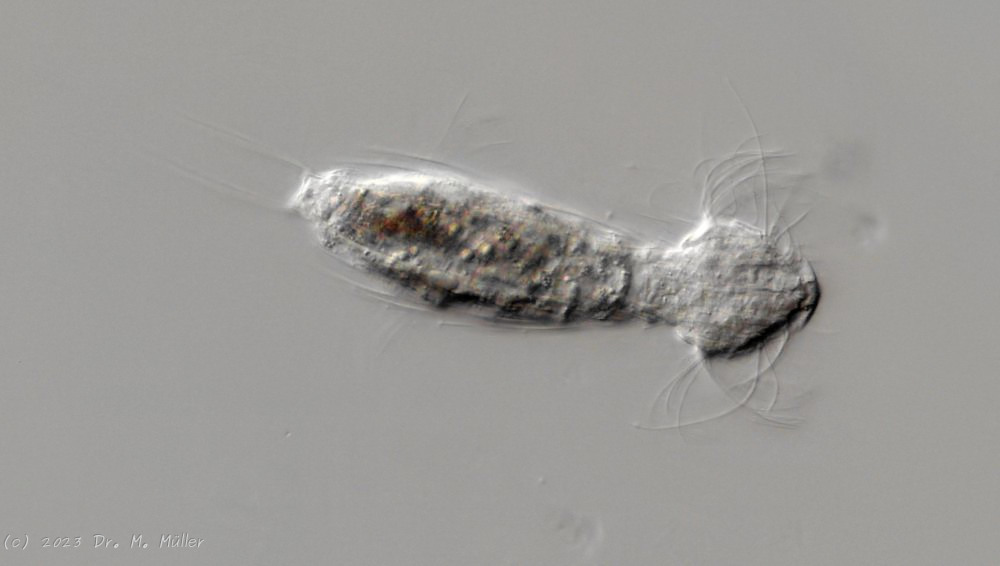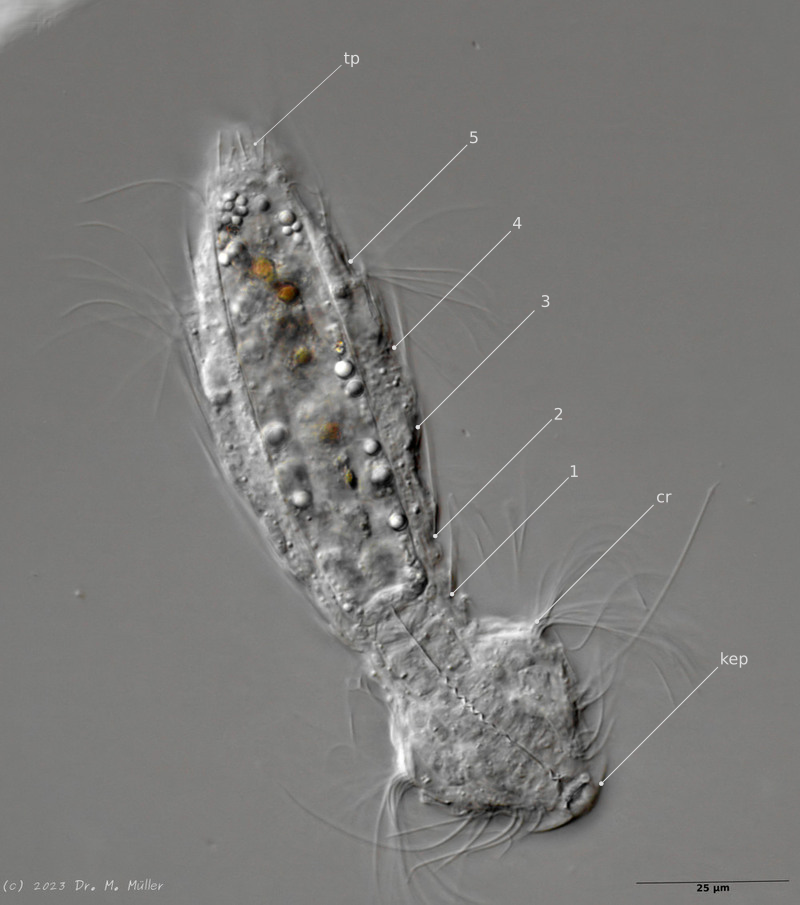Setopus bisetosus

140 µm - 150 µm
Width:
40 µm - 50 µm
Width of the head ( five lobes, broad ):
38 µm - 40 µm
µm
Length of the furca:
Adhessive tubes:
Pharyx ( cylindrical ):
35 µm
Diameter of the mouth ( around ):
unknown
Dorsal scales:
posterior setolae on small keel scales; terminal spine 45µm; spines in 5 groups of one short ventral spine (10-15 µm) and one longer lateral spine (ca. 40 µm); anterior and last group unpaired, i.e. 8 spines per side
Ventral scales:
naked; only one pair of eyelashes; eyelash tufts on head typical
Oecology:
plant-rich pools; over mud; rare
Setopus bisetosus (Thomson, 1891) - a formerly common species - has become very rare due to the progress of industrial agriculture and the accompanying drainage. Therefore, it always pleases me to find a specimen of this species.

free swimming copy
Unfortunately, I could not completely still the animal, so the photo quality was not optimal.
The semi-planktic Setopus species usually do not have continuous ciliary bands and move swimming with an (almost completely closed) ciliary ring on the head. In addition, some ciliary tufts are present ventrally on the head. On the body itself, except for a few isolated cilia, the ciliary bands are reduced to a pair of ciliary tufts on the abdomen.
Ventrally the animal bears three pairs of spines.

Ventral ciliations: cilia ring (cr), ciliate tuft (ct); 1..3: ventral spines.
In median section, two pairs of keeled terminal plates can be seen at the posterior end of the animal. These terminal plates are not mentioned in the literature.
Laterally five pairs of spines are visible.

Median section with terminal plates (tp) and head shield (kep); 1..5: lateral spines; cilia ring (cr).
Typical is the broad and strong head shield (kephalion) of the animals.
(Thompson, 1891)